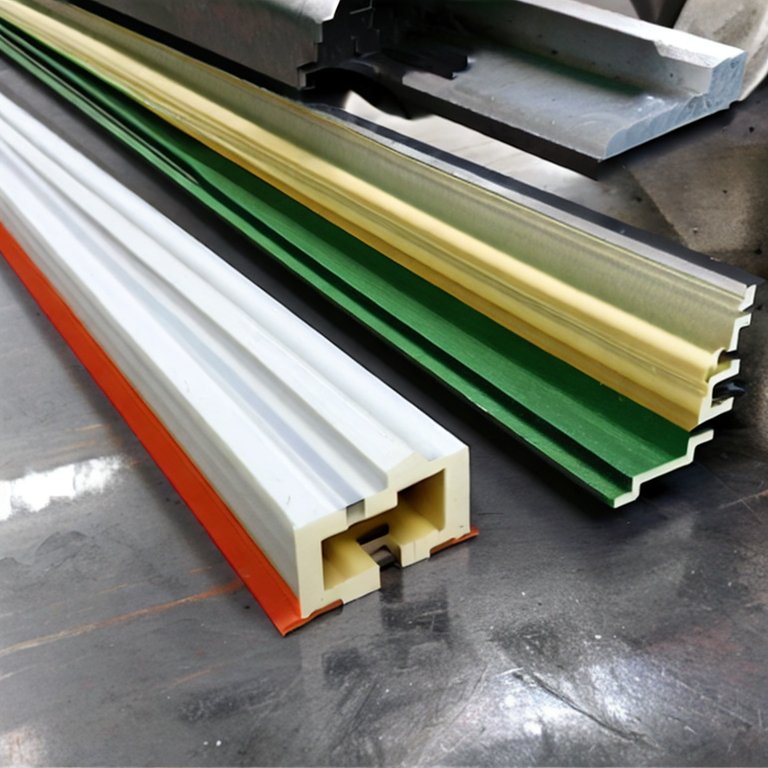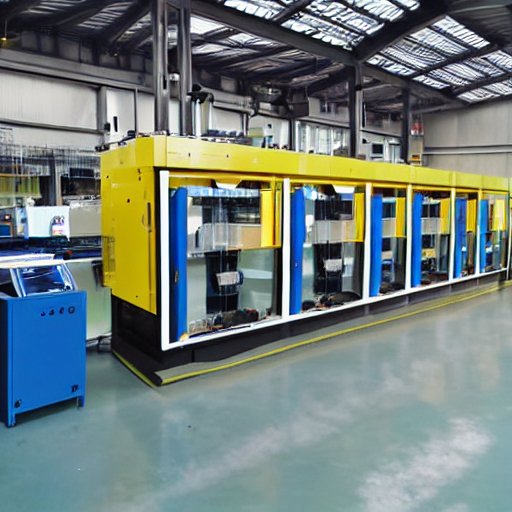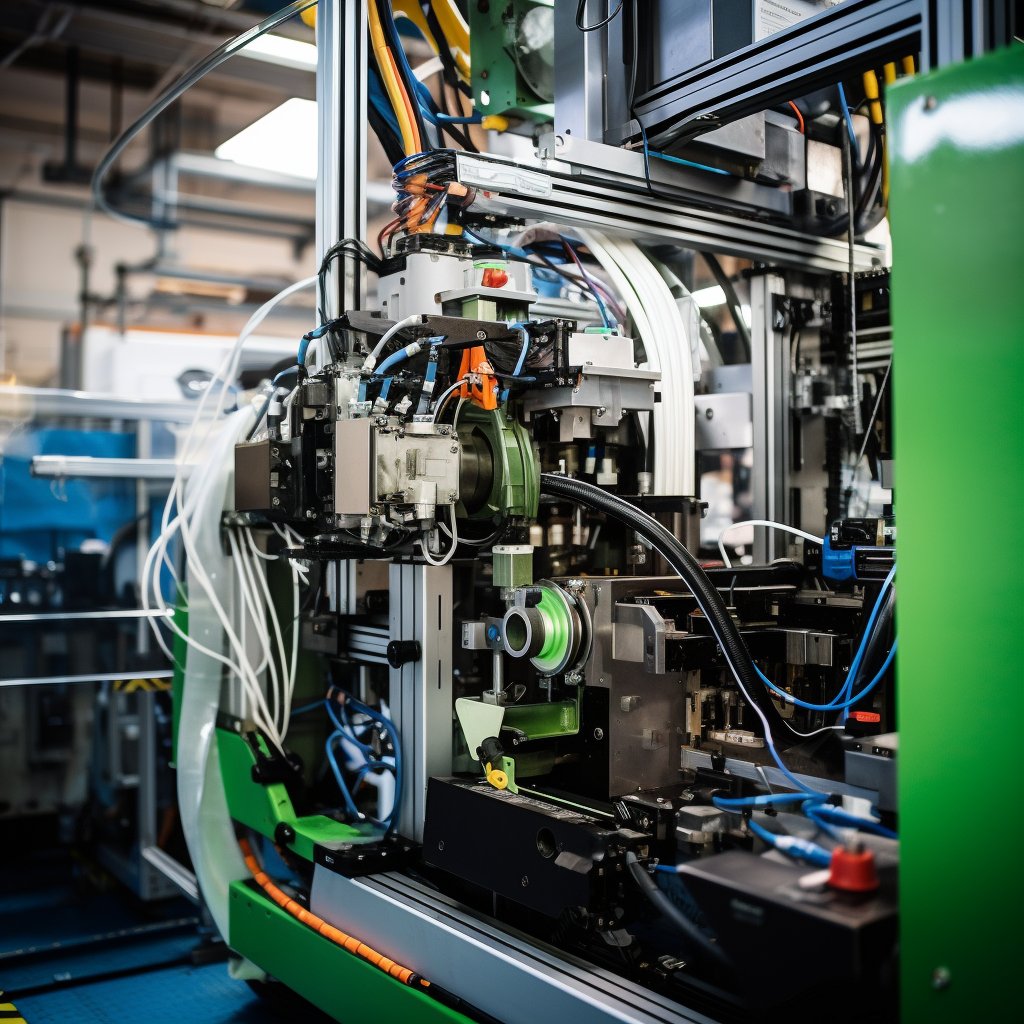Compression moulding is a widely used manufacturing process in the plastics industry. It involves compressing a preheated material in a mould cavity to form a desired shape. The process is also useful in recycling and remanufacturing plastic materials.
Plastic products are ubiquitous in our daily lives, from the packaging of food and beverages to the components of electronic devices and automobiles. However, the environmental impact of plastic production and disposal has become a significant concern in recent years, prompting the need for more sustainable and circular solutions. Compression moulding is a manufacturing process that has gained popularity in the plastics industry for producing high-quality and consistent parts with minimal waste and energy consumption.

Industrial Usage:
Compression moulding is widely used in the plastics industry to produce high-volume and complex parts. It is used to manufacture products like electrical insulators, automotive parts, and appliance parts. The process also has composite materials, such as fibre-reinforced plastics.
The industrial usage of compression moulding is increasing due to its ability to quickly produce large quantities of parts. The process is also cost-effective, as it requires less investment in machinery and tooling compared to other moulding processes like injection moulding.
Application Areas:
Compression moulding is used in various application areas, including aerospace, automotive, construction, electronics, and medical industries. In the aerospace industry, compression moulding produces lightweight and durable parts for aircraft and spacecraft.
In the automotive industry, compression moulding produces parts like brake pads, clutch plates, and interior components. In the construction industry, it is used to produce building materials like roofing tiles and insulation boards. In the medical industry, it is used to produce prosthetics, implants, and surgical instruments.
Consumer Product Examples:
Compression moulding is also used in the production of consumer products. It produces a wide range of products, including kitchenware, toys, and sporting equipment. For example, compression moulding produces plastic bottle caps, golf balls, and Frisbees.
Material Properties:
The material properties of moulded parts depend on the type of material used in compression moulding. Thermoplastics are the most commonly used materials in compression moulding, as they are easily mouldable and have good chemical resistance. Thermosets are used in applications where high strength and stiffness are required. Composites are used in applications where high strength and durability are required.
Future Trends in Regards to Recycling:
As the demand for sustainable manufacturing processes increases, compression moulding is expected to play a significant role in the recycling and remanufacturing of plastic materials. The process can be used to recycle post-consumer plastic waste and transform it into useful products.
In recent years, several companies have developed innovative compression moulding processes that use recycled materials. For example, the company Trex uses a compression moulding process to produce decking materials made from recycled plastic and wood fibres. The process has been successful in reducing waste and creating sustainable products.
The future market prognosis for compression moulding is positive, as the demand for sustainable manufacturing processes is expected to increase in the coming years. The market is expected to experience steady growth due to the increasing demand for high-volume and complex parts in various industries, including aerospace, automotive, construction, electronics, and medical.
The development of new and innovative manufacturing technologies is also expected to drive the market’s growth. These technologies include the use of recycled materials and the development of lightweight and durable materials.
Furthermore, the increasing focus on sustainability and environmental awareness is expected to boost the demand for compression moulding in the recycling and remanufacturing of plastic materials. This is expected to create new opportunities for manufacturers and contribute to the market’s growth.
Market Price Developments:
Factors like the cost of raw materials, labour, and machinery influence the market price of compression moulding. The cost of raw materials is a major factor affecting the market price of compression moulding. The cost of raw materials, like thermoplastics and thermosets, can vary depending on factors like supply and demand, global economic conditions, and political stability.
In recent years, the cost of raw materials used in compression moulding has been affected by the fluctuation in oil prices, which is a key ingredient in the production of many plastics. However, the market price of compression moulding has remained relatively stable due to the increasing demand for the process and the development of new and innovative manufacturing technologies.
Global Impact:
The global impact of compression moulding is significant, as it is widely used in various industries worldwide. The process produces a wide range of products, including automotive parts, electrical insulators, and consumer products. The increasing demand for these products has led to a steady growth in compression moulding worldwide.
The global impact of compression moulding also extends to the environmental aspect, as it can potentially reduce waste and create sustainable products. The process can be used to recycle post-consumer plastic waste and transform it into useful products, reducing the amount of plastic waste in landfills and oceans.
Compression moulding:
Compression moulding is a manufacturing process that offers many advantages in terms of efficiency, consistency, and sustainability. Compression moulding can help reduce the environmental impact of plastic production and disposal by minimising waste and energy consumption and using recycled materials. As the demand for eco-friendly and circular solutions continues to grow, compression moulding is set to play a vital role in shaping the future of the plastics industry.
Compression moulding is a widely used manufacturing process in the plastics industry that is expected to experience steady growth in the coming years. The market for compression moulding is driven by factors like cost-effectiveness, ease of use, and ability to produce high-volume and complex parts.
The global impact of compression moulding is significant, as it is widely used in various industries worldwide. The future market prognosis for compression moulding is positive, as the demand for sustainable manufacturing processes is expected to increase in the coming years. The development of new and innovative manufacturing technologies and increasing focus on sustainability and environmental awareness is expected to drive the growth of the market.






